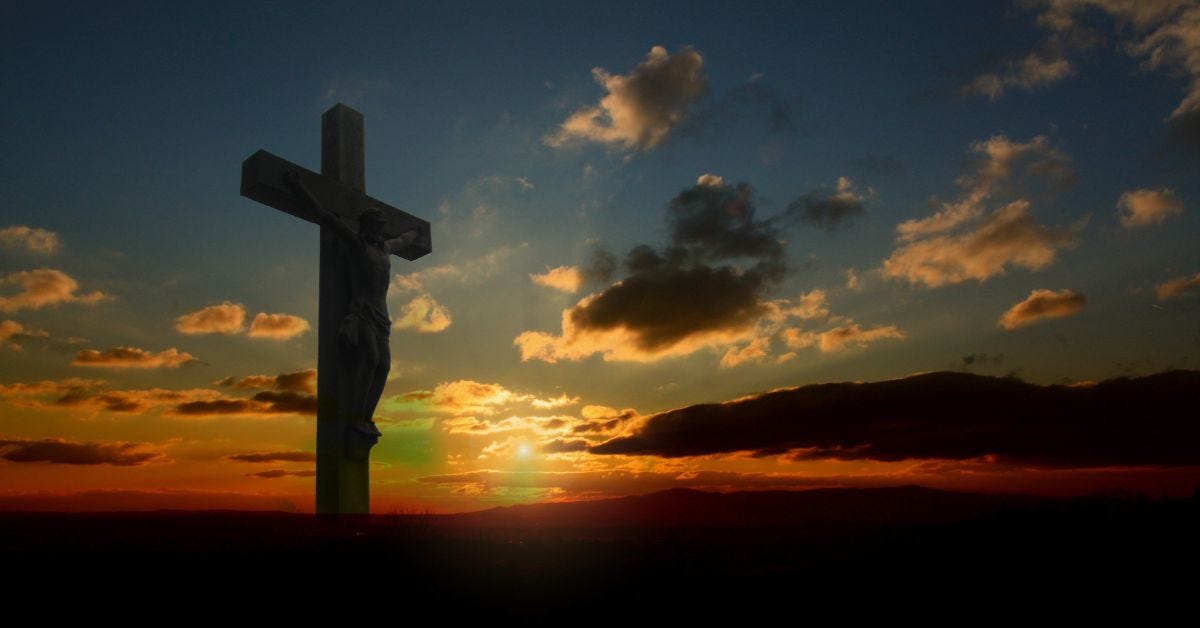Christ is Sufficient
The Free Newsletter
When I read portions of Old Testament Scripture describing the tabernacle, I think of a college course I took in the 1980s. Obviously, that was a while ago, but I can still hear the professor breaking down the details, which went on for an entire semester.
*
God gave Moses specific, minute instructions on every aspect of the mobile tabernacle. He said, “Let them construct a sanctuary for Me, that I may dwell among them” (Exo. 25.8). At the time, the Israelites were a wilderness-wandering people, following their escape from Egyptian captivity.
Exodus 26.31 provides just one brief example of these detailed instructions. God said, “You shall make a veil of blue and purple and scarlet material and fine twisted linen; it shall be made with cherubim, the work of a skillful workman.” This veil (or curtain) was a necessary part of God’s plan for the people He called His own.
The veil, made according to God’s detailed and extravagant design, served as “‘a separation’ between the Holy of Holies and the Holy Place. Its function was to separate all men, even the priests, from” God’s presence.1
*
In the days of wilderness wandering, and extending over the centuries until Jesus’ arrival, the people needed a go-between. They required someone with the assignment, training, and anointing to represent them before God.
In the New Testament, the writer of Hebrews recounts the detailed instructions given to Moses. I love how The Message puts this in plain language we can understand. “That first plan contained directions for worship, and a specially designed place of worship.” (Heb. 9.1) This is referring, of course, to the Old Testament tabernacle.
*
“Only the high priest entered the smaller, inside tent, and then only once a year, offering a blood sacrifice for his own sins and the people’s accumulated sins. This was the Holy Spirit’s way of showing…as long as the large tent stands, people can’t just walk in on God.” (Heb. 9.7-8).
*
Hebrews goes on to explain, “Under this system, the gifts and sacrifices can’t really get to the heart of the matter, can’t assuage the conscience of the people, but are limited to matters of ritual and behavior. It’s essentially a temporary arrangement until a complete overhaul could be made.” (Heb. 9.9-10) The Old Testament system was flawed; it was insufficient. And God knew that one day a greater sacrifice would be required.
Some years back, I spent a few days on the property of a Catholic monastic abbey in northeastern Oklahoma. No, I am not Catholic, but the experience provided a peaceful location for a personal spiritual retreat. A family member and I (both Protestant Christians) stayed in a guesthouse onsite, hosted by one of the nuns. We spent time in individual prayer and Bible study, explored the grounds, and enjoyed the immense solitude.
As a guest at Our Lady of Clear Creek Abbey, you may choose to attend prayer times and various masses (according to the current schedule). Because the Abbey is a Benedictine community, and home to 55 monks, the observance of their rituals and solemnity was quite fascinating.2
*
Though I have friends who were Catholic prior to joining the Christian faith, I had not set through a Catholic ‘worship gathering’ before visiting the Abbey. The experience was especially interesting due to the presence of the monks, and the inclusion of Gregorian chanting and Latin liturgy.
Honestly, I found much to appreciate—the beauty of the worship setting, the devotion of the monks to their faith, and a commitment to the rituals of the church on behalf of the Catholic believers. However, I could never become Catholic, and here’s why.
I believe we no longer need a go-between.
The veil has been torn, making a way for us to enter into the presence of Almighty God. We do not need a priest to receive our confession and present it to the Father repeatedly. If you have received Jesus as Lord and Savior, your salvation is complete in Him.
Christ is sufficient, now and for all eternity. Hallelujah.
Easter is about the beautiful exchange that sealed our redemption. We owed a price we could never pay. Jesus paid that price, that we might go free. One life, in exchange for the lives of many.
The song linked below, and released a few days before Easter, says it so well. “You gave it all. Now it's paid in full. Lord, I can't believe You did that for me.”
Friend, the work of Christ is sufficient, once and for always. Remember this as you celebrate the Easter holiday.
Hallelujah, He is risen, indeed!
Hebrew-Greek Key Word Study Bible, NASB. © 1984, 1990, 2008 by AMG International, Inc. (see study notes, page 115)
Our Lady of Clear Creek Abbey is open for day visits and overnight stays, based on availability. Check their website for information on lodging, schedule (subject to change), and location (remote and specific directions needed).





